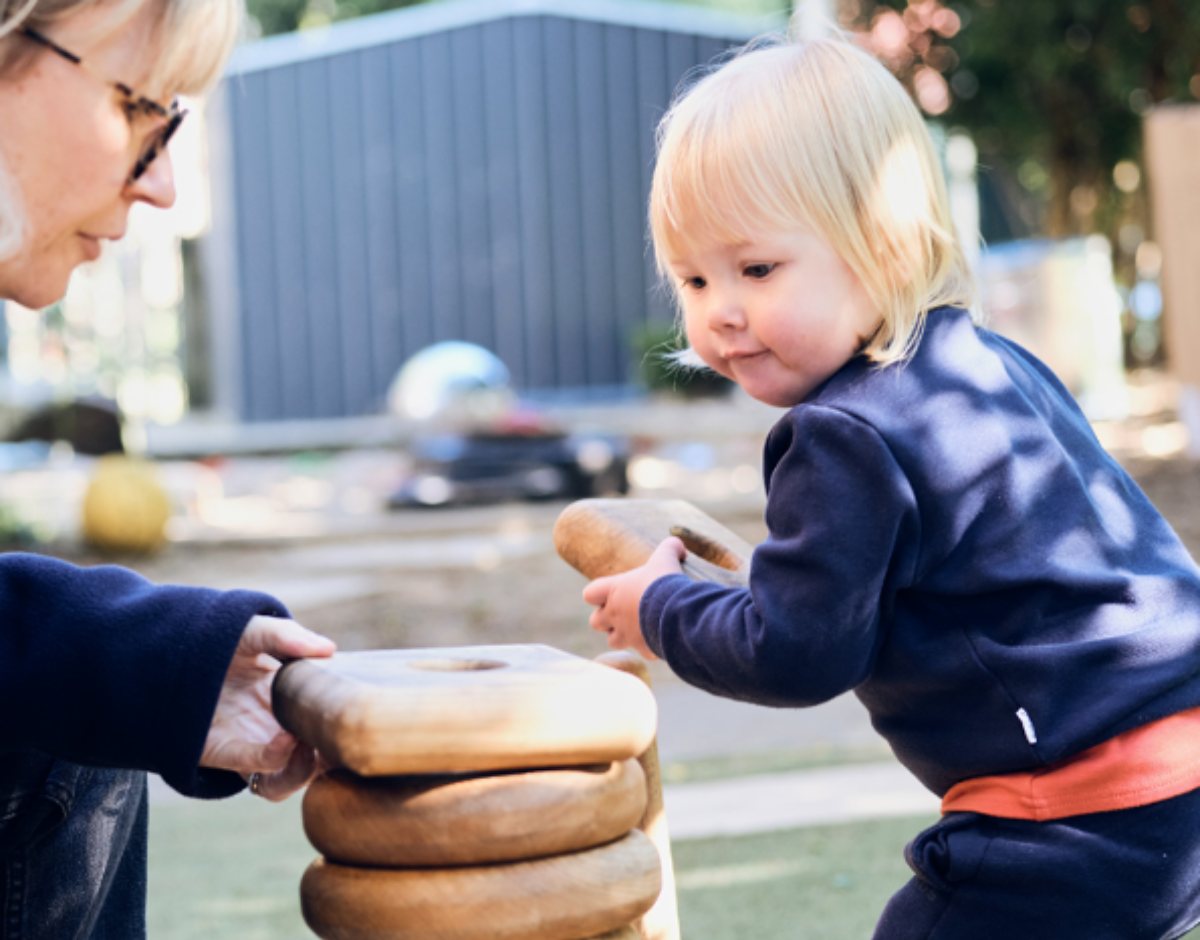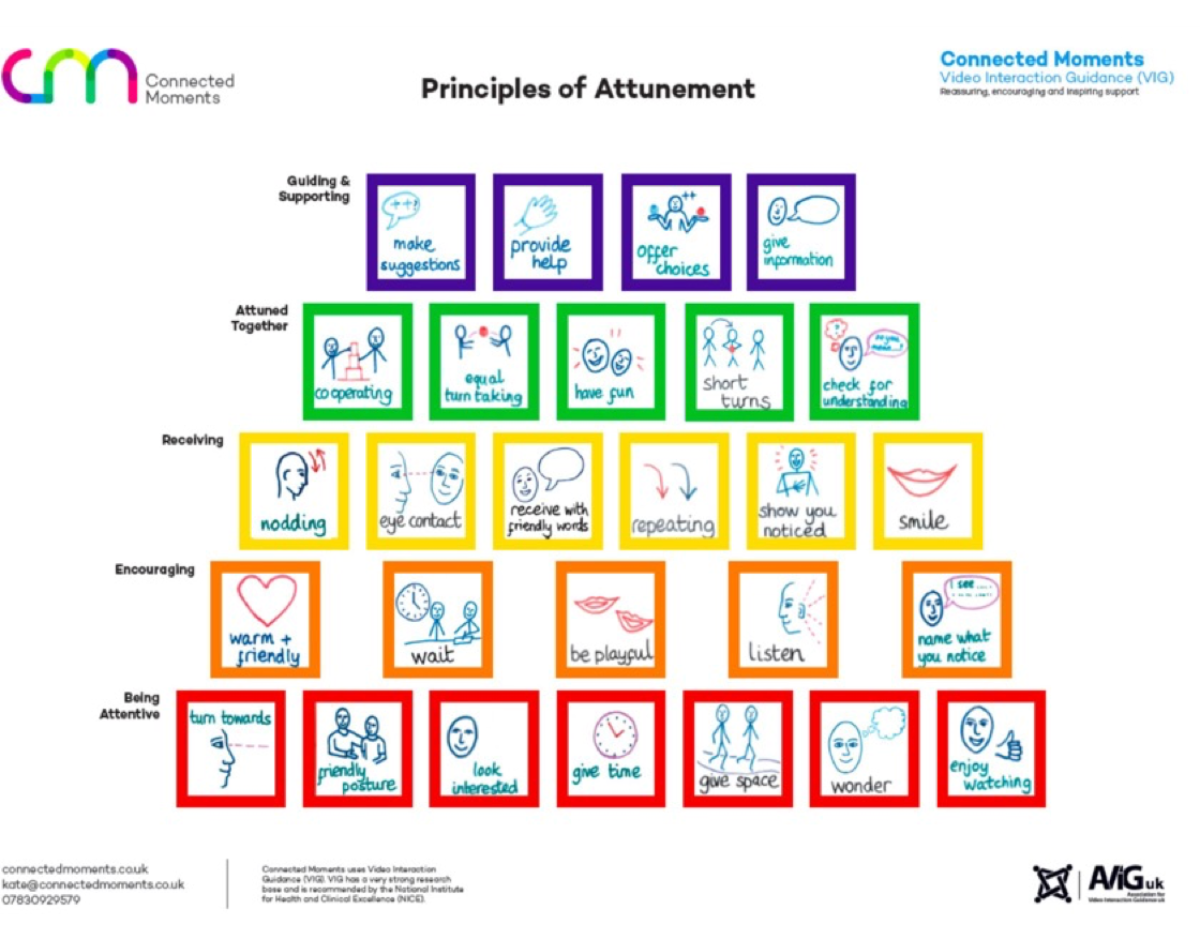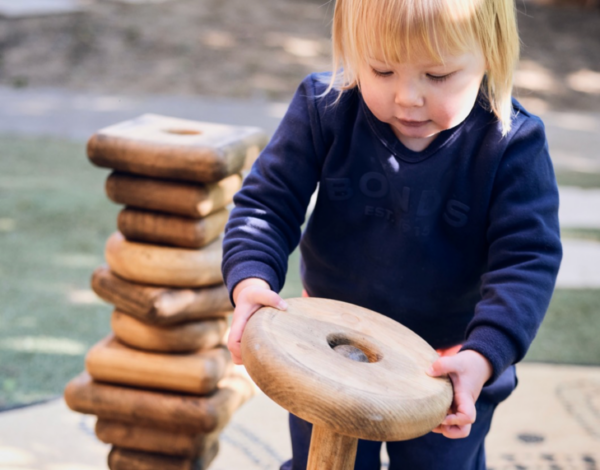The Toddler Learning Circle
Reflections and connections in the toddler learning circle, Julia Manning-Morton, Gowrie New South Wales
Connections in the Toddler Learning Circle by Julia Manning-Morton
By Julia Manning-Morton, Gowrie New South Wales
A Learning Circle is a form of collaborative learning that values the existing knowledge and understanding held by participants and honours the collective wisdom of the group. It reflects ideas from Action Learning; that adults learn by making connections to the real-world and real-life experiences, drawing on what they already know, asking questions and reflecting on actions to create deeper insights.
The Toddler Learning Circle was set up to offer a dedicated time and space in which leaders of practice with toddlers and 2-year-olds would be supported to reflect, change, and develop. It took place online, once per month for 10 months, following on from 2 online courses, which I facilitated. These courses had focussed on leading best practice for 2-year-olds. Several Toddler Learning Circle participants had participated in the courses, so there were some pre-existing relationships, knowledge of the group facilitator and established understandings of the key aspects of toddler and 2-year-olds development in place.
The kind of reflexivity inherent to a Learning Circle requires a learning environment where participants can develop trust in the group and confidence to take risks in their thinking. This emerged in the group as educators began to feel comfortable. For example, discussions on key educator relationships led to some deep reflection on personal motivations and influences on practice.Consequently, one participant looked at an observation of an anxious child slightly differently, considering how the anxious communications of the key educator may have been contributing to the child’s behaviour.
Using real-world issues through actively gathering ‘case study’ materials is a key feature of a Learning Circle. Participants in the Toddler Learning Circle were invited to bring observations to each session for discussion and reflection. These usually related to the topic focus of the session, where the four steps used in the Learning Circle process were broadly followed: reflection, learning, planning and action.

A focus on leading changes in practice, meant that the Learning Circle also aimed to support participants in building confidence and capability through sharing experiences. A common concern that emerged early was about how to share ideas and practice with colleagues to develop a shared vision. Leading change had been a focus on the previous course and, although not addressed directly as a topic in the Learning Circle, the group did reflect on their own and others attitudes to change. Also, the process of observation, reflection and discussion used in the group provided the participants with a model for developing practice within their settings. The positive effect of this was evident at the mid-course review and again at the end when several participants commented on how they were discussing issues in their teams more, sharing observations to explore possible changes and solutions and also leading by example: modelling not just telling.
The other areas of focus initially identified by the group included diverse aspects of practice and provision, including implementation of the key educator approach, provisioning spaces, use of outdoor space, and supporting children with transitions. This last issue became a major focus, as the COVID19 context of the Learning Circle gave rise to many discussions about ‘being together and being apart’ in different ways, for children, families and educators. In these discussions, participants made many connections between their own painful feelings about being separated from loved ones and those of the children when transitioning into the setting. For example, one participant shared how these reflections had enabled her to ‘stay with’ a child during transition, both physically and emotionally and at the child’s pace, with a positive result. This led to some careful thinking not only about initial transitions but also daily transitions within the setting and some of the behaviours that arise from children’s distress, discomfort or confusion around these times. In turn, this led to fruitful discussions within teams and useful changes made, such as the transition into a separate lunch area and the difficulty this seemed to cause some of the children in one setting. What was notable here was the thought given to the emotional impact of the environment on children.
This level of reflection on the emotional dimensions of practice was facilitated by using a holistic observation approach, in which the observer includes notes on their own emotional responses to scenarios. Sharing these in a work discussion forum, enables practitioners to become more attuned to what children may be feeling and to the psychological environment they are experiencing. This approach was reflected in participants’ comments on the connections they had made:
This approach was reflected in participants’ comments on the connections they had made
- ‘The pain and grief of separation and the importance of transitions’
- ‘The impact of the environment on our emotions’
- ‘Educators motivations from their own lives and what they are looking for in their work’
- ‘Sharing and listening in the group with sharing and listening in my team’
A key principle underpinning Julia’s work is that learning is a combined process of feeling, thinking and doing and that practitioners who have the opportunity to reflect on the links between developmental theories, children’s feelings and their own experiences, values and beliefs are more likely to implement and sustain change because it arises from emotional understanding and connection. A key tool for supporting such reflexivity is the use of a professional journal, so in addition to observation tasks, participants were invited to make reflected notes in relation to each session’s focus.
Using reflective journaling as well as observation and group discussion means that educators become better able to understand children’s motivations and needs, as they reflect on and understand their own. Therefore, in the Learning Circle sessions, we also explored the links between educators’ well-being and the well-being of children; reflecting on participants motivations and emotional responses as part of our discussions of the observations.

For example, when reflecting on their own wellbeing, one participant noted how their wellbeing outside of and inside work were completely intertwined, ‘when my wellbeing in one area isn’t being looked after, it affects the other’. And, to sustain a good sense of well-being, I ‘need to take care of myself, getting enough sleep….’ And ‘bringing some of my outside work interests into the workspace, such as gardening, promotes a good sense of well-being’.
The link between the participants’ well-being and positive practice was also clearly made; ‘I find, when I have a good sense of well-being, I have more patience, feel more in control, have more empathy and am more approachable and fun to be around.’
Arising from our theoretical discussions on attachment, group members not only identified that they had developed a greater empathy and understanding of children’s experience but also reflected on their own personal motivations that impact their professional practice; citing this awareness as a key connection they had made in the Learning Circle.
A further connection between the group process and practice is that of taking time to think. It seems that the experience of having a protected space to think and talk had a major impact on the participants approach in their practice. The group discussed ideas in which pausing before taking action, stepping back and thinking about what might be going on became a strong theme. One educator shared a video observation of a child struggling with their anxiety on approaching the physical challenge of using a slide. The educator was able to identify how the child habitually looked for assistance but, on this occasion, the educator paused, still supporting the child with her presence but not immediately stepping in, with the result that the child attempted the challenge more autonomously and with greater self-satisfaction.
In this way ‘taking time’ and ‘slowing down’ were a central feature of the group’s ‘take aways’ from the Learning Circle, with an emphasis on ‘being present’.
Overall, this reflects that the important connections made by educators in the Learning Circle were focused not just on WHAT they were doing but on HOW they were thinking about their practice.
Acknowledgements
Julia Manning-Morton
Julia Manning-Morton is an author, trainer and lecturer in early childhood. Her career spans 40 years and diverse roles as a practitioner, manager, adviser and inspector; mostly in London and also as a lecturer in Early Childhood Studies for 13 years at London Metropolitan University. Julia is now an independent consultant and training group facilitator for ‘Key Times Professional Development’ and an associate trainer for Early Education. She is also a Froebel Tutor.
Despite her long career in early childhood, Julia believes strongly that we should never stop learning and developing, so is currently training to be a Pikler pedagogue and studying for her PhD!
She also believes that we need balance in our lives, so makes sure that she finds time for family, friends, physical activity and creative, mindful pastimes.
As a consultant and trainer, Julia is committed to enabling, empowering and enthusing practitioners to make positive contributions to the lives of babies, young children and their families. Her aim is to promote a sense of professionalism in the early years field that embraces all practitioners, all children and all aspects of their care and learning: Julia’s personal and professional values include a strong emphasis on inclusion and anti-bias.
Julia is the author of a number of publications, the most recent being:
- Foundations of Being: Understanding Young Children’s Emotional, Personal and Social Development. Published by Early Education. > Link
- Child care and Education (6th Edition) with Tina Bruce and Carolyn Meggitt. > Link
- Two Year Olds in Early years Settings, Journeys of Discovery with Maggie Thorp. > Link
- Exploring Well-being in the Early Years. > Link



